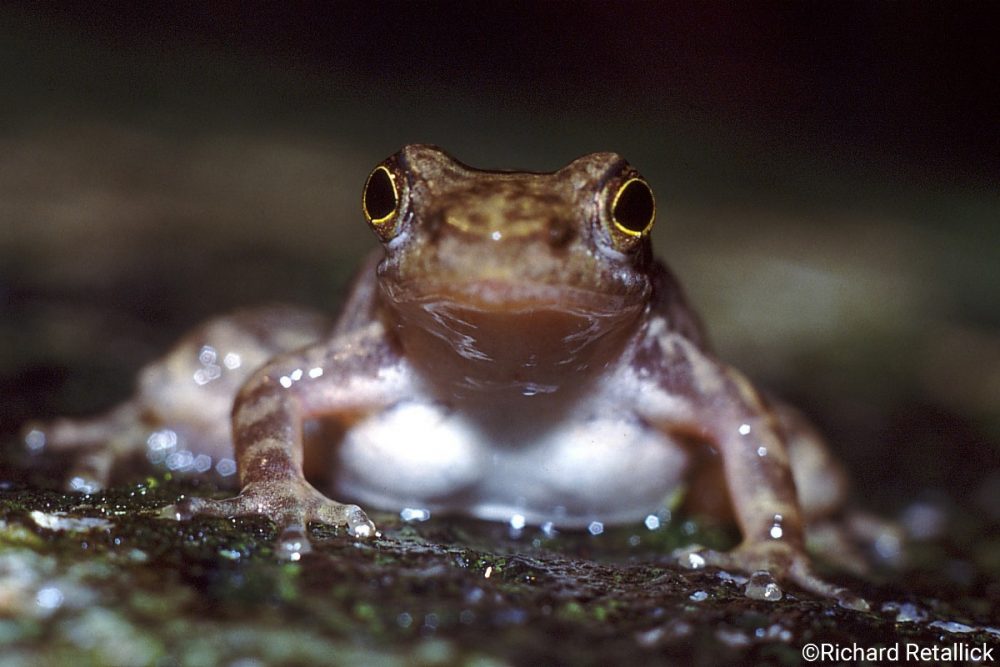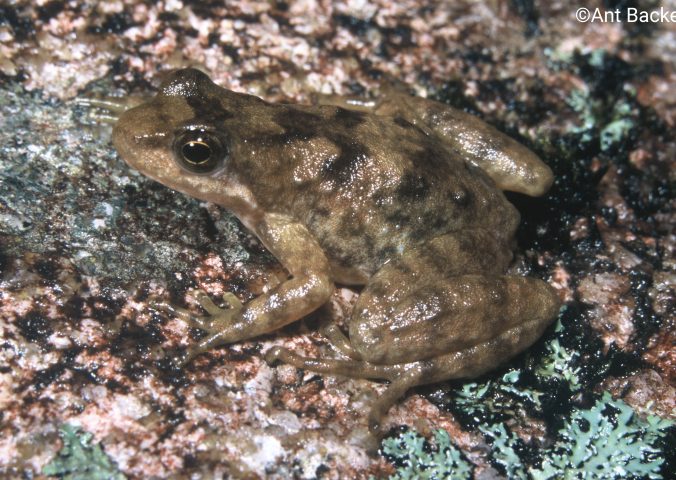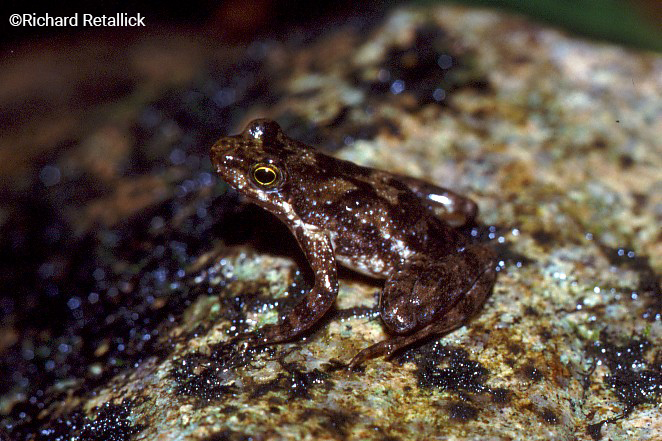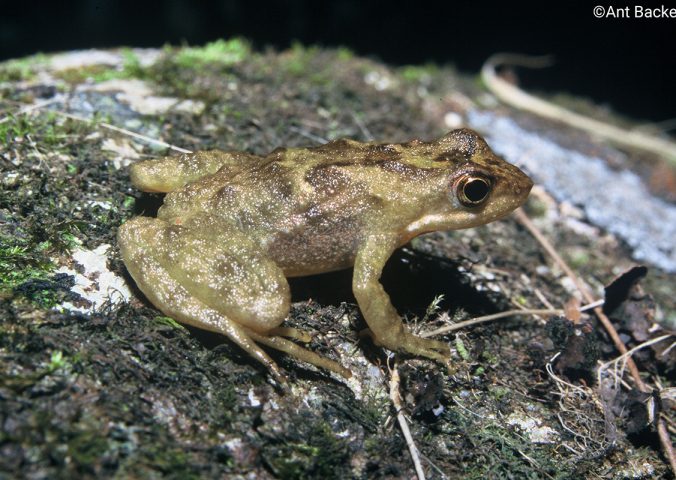About
Until January 1985, this species was considered to be common across its range. However, it was at this time the first indications of decline were recorded, first at lower altitudes and then throughout the whole range.
After a period of apparent absence, an individual was rediscovered in 1992 and the species has subsequently been recorded at nine scattered locations within Eungella National Park.
The Taudactylus genus of frogs, to which this species belongs, diverged from all other amphibians over 65 million years ago. This means this group of frogs has been evolving in isolation since before the extinction of the dinosaurs!
Factors causing declines are not well understood as there is no evidence to attribute declines to seasonal rarity, floods, habitat destruction, parasites and other common threats. The chytrid fungus has been identified in individuals of the Eungella day frog collected in October 1995 but its potential role in the decline of the species is unclear. Drought may have caused some population declines since 1997.
The species is listed as Critically Endangered by the IUCN Red List and as Endangered in Australian legislation, and a good deal of the species’ habitat is within National Parks and State Forests. However, this offers no protection against disease.
- Order: Anura
- Family: Myobatrachidae
- Population: Rare
- Trend: decreasing
- Size: 32-37mm
- Weight: 3.7-5g
EDGE Score
Distribution
The species is now only known from Eungella National Park, Queensland, Australia.
Habitat and Ecology
Eungella day frogs, as the name suggests, are predominantly active during the day, although they can be heard calling at night. The call can be heard for most of the year, but is at its greatest intensity in warmer months. The terrestrial habitat is dense rainforest with understory plants. Breeding occurs all year round by larval development, whereby tadpoles emerge from the eggs. The frogs can be found in steep rocky areas, under rocks or in crevices, notably in the splash zone of cascades and waterfalls in rainforest and wet sclerophyll forest streams with adults found basking on stream-side rocks.



